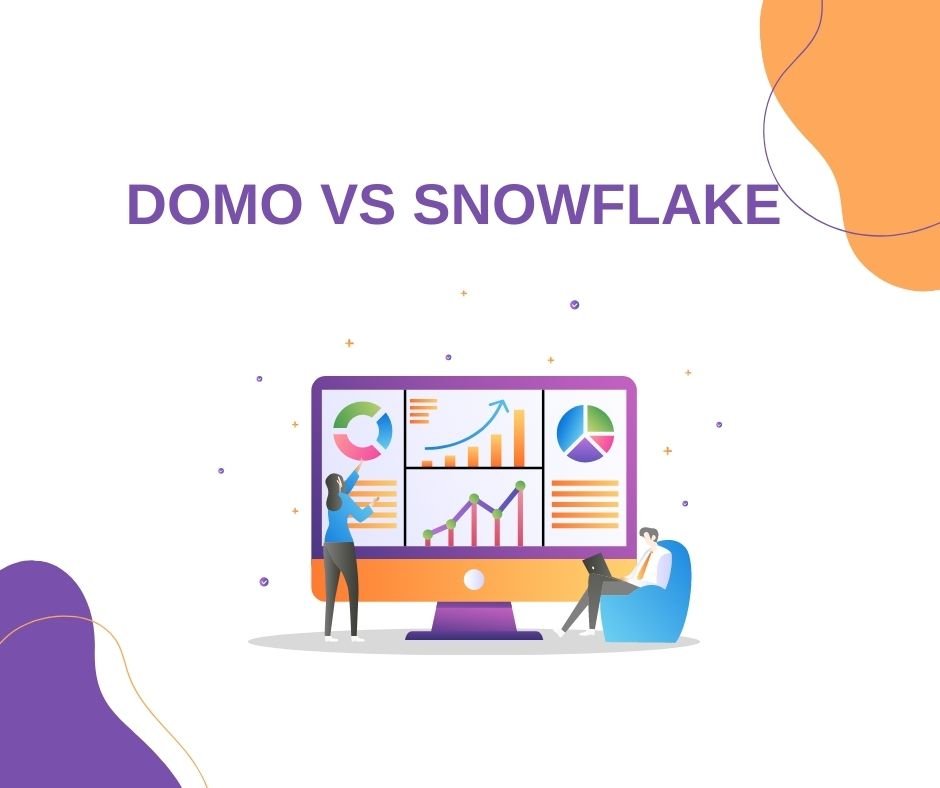Unlock the potential of your data with business intelligence best practices. Discover essential strategies for defining objectives, choosing the right tools, training users, and measuring success to drive informed decision-making and achieve business goals.
Unlocking Data’s Potential: Business Intelligence Best Practices for Success
In today’s fiercely competitive landscape, data is no longer just a byproduct of operations; it’s the lifeblood of informed decision-making. Business intelligence (BI), the process of analyzing data to provide actionable insights, has become indispensable for organizations seeking a competitive edge. However, simply implementing BI tools isn’t enough. To truly harness the power of your data, adhering to business intelligence best practices is crucial. This article delves into the core principles that will guide your BI initiatives toward achieving meaningful and sustainable results.
Effective BI isn’t a one-time project; it’s an ongoing journey. By embracing these best practices, organizations can transform raw data into strategic assets, driving innovation, optimizing processes, and ultimately, achieving their business objectives. Let’s explore the fundamental pillars of a successful BI strategy.
Establishing a Solid Foundation: Defining Objectives and Data Governance
Before diving into dashboards and reports, the most crucial step is defining clear and measurable business objectives for your BI initiatives. What questions are you trying to answer? What problems are you trying to solve? Without a clear understanding of your goals, your BI efforts risk becoming aimless and inefficient.
Key Considerations for Defining Objectives:
- Align with Strategic Goals: Ensure your BI objectives directly support the overall strategic goals of your organization.
- Identify Key Performance Indicators (KPIs): Define the specific metrics you will use to measure progress and success.
- Involve Stakeholders: Collaborate with relevant departments and individuals to understand their information needs and priorities.
- Prioritize Objectives: Focus on the most critical questions that will impact your business the most.
Alongside clearly defined objectives, robust data governance is paramount. Data governance encompasses the policies, procedures, and standards that ensure the quality, security, and accessibility of your data. Poor data quality leads to inaccurate insights, undermining the entire purpose of BI.
Essential Elements of Data Governance:
- Data Quality Management: Implementing processes to ensure data accuracy, completeness, consistency, timeliness, and validity.
- Data Security and Privacy: Establishing policies and technologies to protect sensitive data and comply with regulations.
- Data Lineage and Documentation: Tracking the origin and transformations of data to ensure transparency and trustworthiness.
- Data Access and Sharing: Defining rules and permissions for accessing and sharing data within the organization.
The Right Tools for the Job: Choosing and Implementing BI Solutions
The BI landscape is populated with many tools, each with its strengths and weaknesses. Selecting the right tools is critical for enabling effective data analysis and visualization.
Factors to Consider When Choosing BI Tools:
- Business Requirements: Does the tool meet your analytical needs, reporting requirements, and data integration capabilities?
- User Friendliness: Is the interface intuitive and easy for users of varying technical skills to navigate?
- Scalability: Can the tool handle your current data volume and scale as your data grows?
- Integration Capabilities: Can it seamlessly connect with your existing data sources and systems?
- Cost and Licensing: Evaluate the total cost of ownership, including licensing fees, implementation costs, and ongoing maintenance.
- Vendor Support and Training: Does the vendor offer adequate support and training resources?
| Feature | Description | Importance |
|---|---|---|
| Data Sources | Types of databases and systems the BI tool can connect to. | Ensures access to all relevant data for comprehensive analysis. |
| Data Modeling | Capabilities for transforming and structuring data for analysis. | Improves data quality and simplifies complex data relationships. |
| Visualization | Range of charts, graphs, and dashboards for presenting insights. | Makes data understandable and actionable for a wider audience. |
| Reporting | Features for creating and distributing reports in various formats. | Facilitates sharing insights and tracking performance against KPIs. |
| Collaboration | Options for sharing dashboards, reports, and analyses with colleagues. | Encourages data-driven collaboration and knowledge sharing. |
| Mobile Access | Ability to access and interact with BI data on mobile devices. | Provides flexibility and accessibility for on-the-go decision-making. |
Once you’ve selected your tools, implement them thoughtfully. Avoid overwhelming users with too many features at once. A phased approach, starting with core functionalities and gradually rolling out more advanced features, can improve adoption and minimize disruption.
Empowering Users: Training and Accessibility
Even the most sophisticated business intelligence best practices tools are rendered ineffective if users lack the skills to utilize them properly. Investing in comprehensive training programs is essential for empowering employees to leverage BI effectively.
Key Aspects of User Training:
- Tailored Training: Develop training programs that cater to different roles and skill levels within the organization.
- Hands-on Experience: Provide opportunities for users to practice using the tools with real-world data.
- Ongoing Support: Offer readily available resources, documentation, and support channels for users to address questions and challenges.
- Promote Data Literacy: Educate users on basic data concepts and analytical thinking to foster a data-driven culture.
Furthermore, ensuring accessibility to BI insights is critical. Dashboards and reports should be easily accessible to the relevant stakeholders, regardless of their location or device. Consider implementing self-service BI solutions that allow users to explore data and generate their reports without relying solely on IT or dedicated analysts.
Embracing an Iterative Approach and Continuous Improvement
BI is not a static endeavor. Business needs and data sources evolve, requiring a flexible and adaptable approach. Embrace an iterative methodology, where you continuously evaluate, refine, and improve your BI processes and solutions.
Principles of an Iterative BI Approach:
- Start Small and Iterate: Begin with focused projects and gradually expand the scope of your BI initiatives.
- Gather Feedback Regularly: Solicit feedback from users and stakeholders to identify areas for improvement.
- Monitor Performance and Usage: Track the adoption and impact of your BI solutions to understand what’s working and what’s not.
- Stay Updated with Technology: Continuously evaluate new BI technologies and features to identify potential enhancements.
Visualizing Insights Effectively: The Power of Storytelling
Data visualization is a crucial component of BI, transforming raw data into easily understandable and actionable insights. Effective visualizations go beyond simply displaying numbers; they tell a story that resonates with the audience.
Best Practices for Data Visualization:
- Choose the Right Chart Type: Select visualizations that effectively represent the type of data and the message you want to convey.
- Keep it Simple and Clear: Avoid clutter and unnecessary elements that can distract from the key insights.
- Use Color Strategically: Employ color to highlight important data points and create a visual hierarchy.
- Provide Context and Labels: Ensure that charts and graphs are properly labeled and provide sufficient context for interpretation.
- Tell a Story: Structure dashboards and reports in a logical flow that guides the user through the insights.
Examples of Effective Data Visualization:
- Bar charts: Comparing values across different categories.
- Line charts: Showing trends and changes over time.
- Pie charts: Illustrating proportions of a whole.
- Scatter plots: Identifying correlations between two variables.
- Maps: Visualizing geographical data.
Measuring Success: Quantifying the Impact of BI
Finally, it’s crucial to measure the success of your BI initiatives. Go back to the objectives you defined at the outset and evaluate whether your BI efforts are helping you achieve them.
Key Metrics for Measuring BI Success:
- Improved Decision-Making: Are business decisions being made more quickly and effectively based on data insights?
- Increased Efficiency: Are processes being optimized and costs reduced through data analysis?
- Enhanced Customer Satisfaction: Are you gaining a better understanding of customer needs and improving their experience?
- Revenue Growth: Is BI contributing to increased sales and profitability?
- Improved Operational Performance: Are key operational metrics showing positive trends due to data-driven insights?
- User Adoption Rates: How actively are users engaging with the BI tools and dashboards?
By tracking these metrics, you can demonstrate the value of your BI investments and identify areas where further improvements can be made.
Conclusion: Embracing a Data-Driven Future
Implementing business intelligence best practices is not merely about adopting new technology; it’s about fostering a data-driven culture within your organization. By focusing on clear objectives, robust data governance, user empowerment, and continuous improvement, you can unlock the immense potential of your data and gain a significant competitive advantage. Embrace these principles, and you’ll be well on your way to transforming data from a passive resource into a powerful driver of business success.















